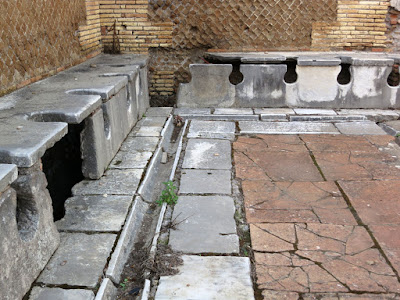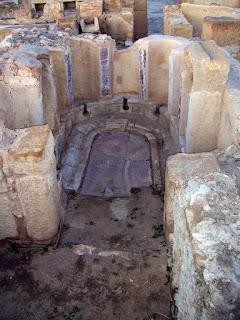OK. What's Hogre? As this 2018 (San Lorenzo) image suggests, Hogre's a street artist, specializing in stencils and, more recently, in large posters. Many of his early stencils feature Hogre's face, and it's likely that this What's Hogre? image is, indeed, Hogre--though perhaps years ago. We would guess he's more like 40 now.
Hogre is from Rome, and we first encountered his work in 2010 (but heard about him as early as 2009), when we found this image of an angry, "I can't take it anymore" Hogre.
In these "early" years, Hogre's work was satiric, but quite unassuming--small in size and muted in
tone--though always identified as "Hogre." Here are some other Hogre stencils and pasteups we found in Rome:
| Achtung (2013). Tor Pignattara. |
| Not sure what this has to do with Spam. The image appears to be of the Vatican, with a devil-like octopus hovering above. Hogre was never fond of the Catholic Church, as we shall see later. 2015 |
 |
| An Asian temple (?), atop the Coliseum. |
| Ego, 2013. Looks too old to be Hogre, as does "Achtung" (above). |
 |
| Relaxing with a bottle of something. Ostiense underpass, 2014. |
 |
| "Look Inside Yourself." |
Hogre's most famous (or infamous) Rome moment occurred in 2017, when he was arrested at an internet cafe in the city, charged under an obscure Italian law with a "public offense to religion," a crime carrying with a fine of up to 5,000 Euro and/or a 2-year jail term. Hogre's sin was to use a bus stop advertising space for his "Ecce homo erectus (left, below) featuring Jesus with an erection emerging under his robe, his hand on the head of a boy kneeling before him. Scandalous! Hogre explained that the poster was a response to sexual abuse charges against Cardinal Pell, a high-ranking Vatican official.
 |
| "Ecce homo erectus" (left) |
More recently, Hogre has been working in Warsaw and London, the latter a city he identifies with his new nemesis, the advertising industry. "I declared war on kitsch supremacy, embodied in the ads, and definable as the refusal of everything that is considered unacceptable. And London is the capital of this aesthetic ideal." Put another way, Hogre detests the way today's advertising of "brand identities" suffocates individual identity. Guy DeBord and Max Stirner are among his intellectual influences.
His campaign against the messaging of the ad industry (and those who use that industry, including government agencies) is carried out in two ways, each very different from the simple stencils that characterized his early work in Rome. One technique is to tear away at existing posters (or locating posters that have been torn--not difficult), then superimposing the text "SUBVERTISING" (that is, subverting advertising). This technique appears to be an aspect of what Hogre calls "creative vandalism."
Hogre's second technique, more widely employed, is to replace existing posters--the standard ones, covered in glass and locked, mostly at bus stops, sometimes inside subway cars--with his own posters. This work is usually accomplished with a group of co-conspirators, equipped with the 4-headed key required to gain access to the glassed-in, bus-stop posters.
Here's an example from Warsaw:
 |
And one from London:
Much of Hogre's work is political. One poster, mounted in Greenwich, featured an advertisement for Titan Deportation Charter Flights, with the slogan, "For Your Safety on Board You Had Better Be White." Another, below, features the London police and the theme, "Help Keep Your Neighbourhood Paranoid."
"Social cleansing," also London. Below, a worker imagines himself being swept away with masses:
Asked "What's next for Hogre," the artist replied, "I would love to shit on the tomb of Goebbels, and his legacy." Stay tuned. Hogre is not dead:
 |
| Looks like Rome |
Bill
Hogre has recently published a limited edition book, Subvertising: The Piracy of Outdoor Advertising (Dog Section Press - "we make books with bite" - sold out as of this writing). Much of his work can be viewed on Flickr.
Jessica Stewart's Street Art Stories Roma featured Hogre.

















